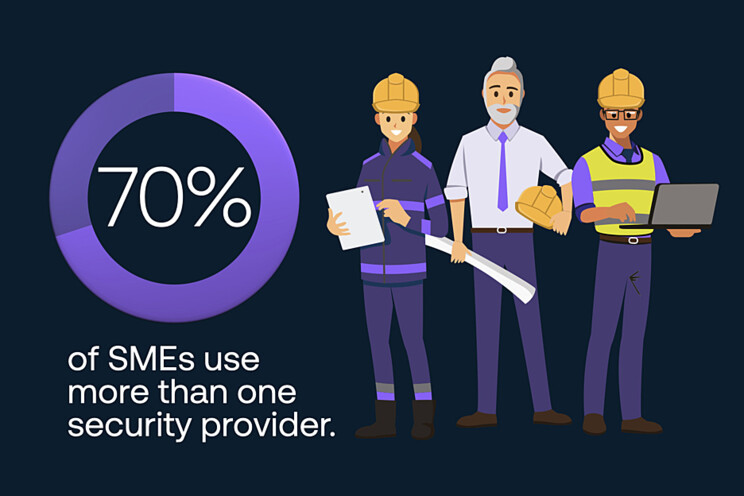By the end of this guide, you'll be a fire extinguisher expert! So read on to learn how to use this essential safety tool to protect yourself and your commercial property.
Proper fire extinguisher use for commercial properties
Thousands of fires occur every year, resulting in property damage and personal injury. Many of these fires could be avoided if people were more knowledgeable about extinguishing fires and maintaining fire extinguishers. With the right knowledge about how to operate a fire extinguisher and choosing the most suitable model, you can effectively locate and extinguish fires, preventing further damage.
Fire extinguishers can save lives and protect property in a variety of situations. They can be used to fight small fires before the fire brigade arrives and help prevent the fire from spreading and causing serious damage. Proper use of a fire extinguisher is an important part of firefighting. Everyone in a commercial building or on the premises should learn the basics of firefighting and how to use fire extinguishers properly.
Types of fire extinguishers
Fire extinguishers are indispensable when it comes to fighting various types of fires quickly and effectively. Whether in an office, a public building, or an industrial facility, it's important to know which fire extinguisher to use and how to use it. There are different types of fire extinguishers, each with its specific purpose:
- Water fire extinguishers: The most commonly used fire extinguisher. They are ideal for class A fires (combustible solids like wood, paper, and textiles).
- Foam fire extinguishers: These use foam to smother the flame and are particularly suitable for class A and class B fires (flammable liquids).
- CO2 fire extinguishers: Containing carbon dioxide, these are suitable for class B and class C fires (flammable gases) and are effective on electrical fires because they leave no residue.
- Powder fire extinguishers: Using fine powder, these extinguishers are suitable for class A, B, and C fires and electrical fires.
If you're unsure which extinguishing agent is the right one for your situation, consult an expert or read the instructions on the fire extinguisher.
Placement of fire extinguishers
Fire extinguishers need to be easily accessible in the event of a fire. Place them where there is a risk of fire and where they can be easily reached. Install extinguishers in clearly visible places where potential hazards exist, such as kitchens, warehouses, or workshops. It's advisable to have several fire extinguishers in any location where people work or gather—at least one on every floor and in hallways and corridors. Regular fire safety inspections can help ensure that your property is protected from fire as effectively as possible.
Using a fire extinguisher effectively
The first and most important rule when using a fire extinguisher is to ensure you do not put yourself in danger. Follow these steps to use a fire extinguisher effectively:
- Read the instructions: Ensure the extinguisher is suitable for the fire.
- Hold the extinguisher: Grip it by the handle and hold it vertically.
- Pull the pin: Remove the pin to unlock the extinguisher.
- Aim the nozzle: Direct the extinguishing jet at the base of the fire.
- Squeeze the handle: Release the extinguishing agent until the fire is out.
- Sweep the nozzle: Move the nozzle from side to side to cover the fire area.
Ensure you're in a position to extinguish the fire without endangering yourself. Evacuate everyone before attempting to put out the fire and keep a safe distance from the flames and smoke. Use protective equipment such as a mask, scarf, or gloves when handling the fire to protect yourself from smoke inhalation and injury.
Proper maintenance of fire extinguishers
Always heed the manufacturer’s warnings and ensure that the extinguisher is completely drained and maintained according to the manufacturer's instructions. Proper maintenance is critical to ensuring you can respond safely and efficiently in the event of a fire. Most extinguishers require an annual inspection, but some may need more frequent service. Follow the manufacturer's instructions and conduct a full inspection at least once a year.
Regular maintenance includes checking the pressure gauge, pressure indicator, locking mechanism, and weight of the extinguisher. Ensure all mechanical components are in good condition and that all necessary parts are available. For professional maintenance, rely on Securitas, which offers complete service for your fire protection equipment, including cleaning, maintenance, and service.
Conclusion
Knowing how to use fire extinguishers correctly, how to install smoke detectors, and how to regularly check extinguishers can help minimise property damage and personal injury. If you're not confident in using fire extinguishers or need a refresher, special training in fire protection is recommended. Our training courses ensure you can act confidently and efficiently in the event of a fire.
For more information on how Securitas can help enhance your fire safety measures, get in touch with our team. Let us be your trusted partner in protecting your commercial property from fire.


Schedl_Securitas.jpg)
.jpg)

